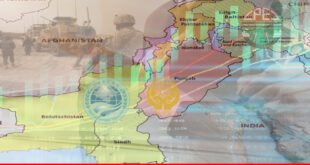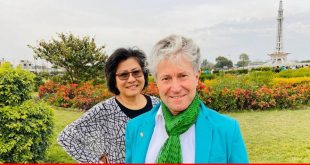In Pakistan, Pakistan Broadcasting Corporation (PBC) or Radio Pakistan is a public radio broadcasting network and is also a mass-media state-owned huge corporation. PBC offers a broad range of news and radio services which are broadcast in Internet, TV and radio, outside the country in ten dissimilar languages. Pakistan broadcasting’s programs served as mission idea to entertain citizens by cultural features, music, and plays, while educating the international spectators about the country, its government and culture, and the globe. A 1973 law, Pakistan regulated corporation to as to publish, distribute, circulate and regulate information and news in any part of the globe in any manner that may be deemed fit. The corporation’s television programs and radio services are broadcast by different ways such as satellite, AM, cable, FM and shortwave radio frequencies. However, select Pakistan Broadcasting Corporation programming is also accessible by WRN. At nationwide level, the corporation broadcasts its programs in twenty three dissimilar state-recognized languages at 24-hour news cycle time. PBC is also covering Southern, Eastern, Western, Northern Asia and some parts of Eastern Europe. No doubt, radio Pakistan is the official foreign broadcasting station of the country.
As Pakistan is tactically situated and is a close neighbor of India, China, Middle Eastern states and Central Asia, it is essential to utilize radio Pakistan and its exterior services as an instrument to project Pakistan’s strategies in true viewpoint so that a message of friendship and peace is disseminated globally particularly to its neighbors. The programs of exterior services are so planned as to project the country’s perspective on local and international strategy issues. Another special objective of these services is to disseminate skills about the culture, art, values, history and way of life standards of its citizens among international listeners in order to generate feelings of friendship, mutual understanding and goodwill which assist create an surroundings of peace and harmony and make co-existence possible in the area. Surprisingly they broadcast in thirty four languages: Urdu, Hindko, Sinhala, Balochi, Seraiki, Potowari, Nepali, Russian, Turkish, Arabic, Bengali, Hindi, Kohistani, Khowar, Kashmiri, Sindhi, Dhatki, Gojri, Pahari, Burushaski, Balti, Shina, Wakhi, Hazargi, Brahvi, English, Chinese, Dari, Persian, Punjabi, Pashto, Gujarati and even Tamil.
Research review
According to the economic adepts predicted that the TV dominates the media market in the country, with greater than three-fourths of adults (76.2 percent) watching weekly. However, cell phones are becoming more ordinary, signaling a likely move in the way Pakistani citizens engage with media. Furthermore, the country’s liberalized its radio market during 2002 along with its cable and satellite TV markets. There are currently greater than 130 commercial radio stations licensed in the entire country, in addition to the 31 radio stations managed through state-owned broadcaster Radio Pakistan.
Most radio stations emphasis on entertainment programming, offered that political news and commentary is still prohibited to government channels or foreign broadcasters like VoA (Voice of America) and the BBC. Presently approximately one in six Pakistanis (16.5 percent) listen to the radio at least weekly. Particularly, youth Pakistani adults are most possible to listen to the radio weekly or more – 21.2 percent of those age 15 to 24 do so, with weekly listening trending descending by age group to just 10.4 percent among those 55 and older. Greater than two-thirds of weekly radio listeners (71.2 percent) tell they tune in via the FM waveband, although AM utilize is also comparatively normal at 29.7 percent. Adepts also predicted that about one in eight weekly listeners (13.3 percent) record utilizing shortwave radio.
Reflecting the rapid spread of feature phones equipped with FM radio receivers in the country, Pakistan’s weekly radio listeners are presently more possible to tell they’ve tuned in utilizing their cell phones (61.9 percent) than to tell they’ve listened via a conventional radio receiver (49.3 percent). This helps show why overall radio use is presently most normal among young citizens, who are more probable than their elders to tell they have utilized their cell phones to listen to the radio in the previous week.
 PAGE Blog Business Weekly Magazine
PAGE Blog Business Weekly Magazine

